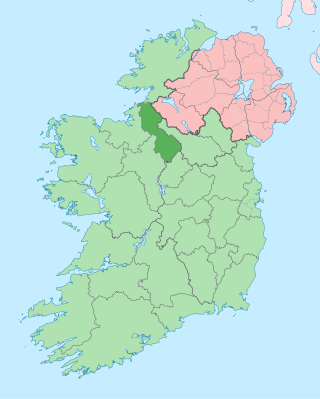
County Leitrim is a county in Ireland. It is in the province of Connacht and is part of the Northern and Western Region. It is named after the village of Leitrim. Leitrim County Council is the local authority for the county, which had a population of 35,087 according to the 2022 census.

County Sligo is a county in Ireland. It is in the Northern and Western Region and is part of the province of Connacht. Sligo is the administrative capital and largest town in the county. Sligo County Council is the local authority for the county. The population of the county was 69,819 at the 2022 census. It is noted for Benbulben Mountain, one of Ireland's most distinctive natural landmarks.
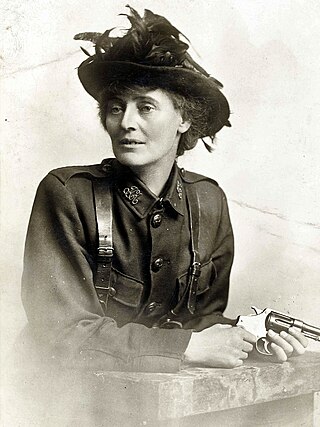
Constance Georgine Markievicz, also known as Countess Markievicz and Madame Markievicz, was an Irish politician, revolutionary, nationalist, suffragist, socialist, and the first woman elected to the Westminster Parliament, and was elected Minister for Labour in the First Dáil, becoming the first female cabinet minister in Europe. She served as a Teachta Dála for the Dublin South constituency from 1921 to 1922 and 1923 to 1927. She was a Member of Parliament (MP) for Dublin St Patrick's from 1918 to 1922.
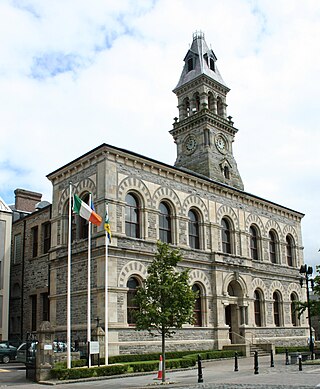
Sligo is a coastal seaport and the county town of County Sligo, Ireland, within the western province of Connacht. With a population of 20,608 in 2022, it is the county's largest urban centre and the 24th largest in the Republic of Ireland.

Ballymote is a market town in southern County Sligo, Ireland. It is around 20 km south of Sligo town in the province of Connacht, which is in the north-west of Ireland. Ballymote lies in the barony of Corran. It is a commuter town with a strong history of independent enterprises along with firm local health, school, and transport services. Ballymote is on the main Dublin to Sligo Train Line, and 10 minutes from the N4 / N17 roads. The town serves a large hinterland area in south east County Sligo.

Cliffoney, officially Cliffony, is a village in north County Sligo, Ireland. It lies on the N15 national route at its junction with the R279. It is only three kilometres away from Mullaghmore which is popular with surfers.

Rosses Point is a village in County Sligo, Ireland and also the name of the surrounding peninsula.

Ballybofey is a town located on the south bank of the River Finn, County Donegal, Ireland. Together with the smaller town of Stranorlar on the north side of the River Finn, the towns form the Twin Towns of Ballybofey-Stranorlar. Ballybofey-Stranorlar, a census town, had a population of 4,852 in 2016.
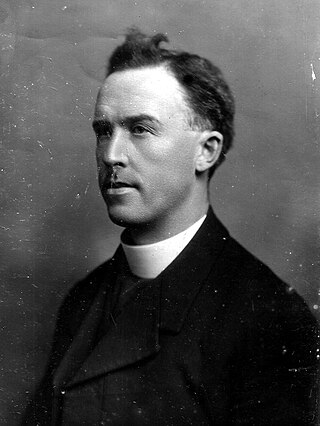
Michael O'Flanagan was a Roman Catholic priest, Irish language scholar, inventor and historian. He was a popular, socialist Irish republican; "a vice-president of the Irish Agricultural Organisation Society, he was a proponent of land redistribution." He was Gaelic League envoy to the United States from 1910 to 1912, and he supported the striking dockers in Sligo in 1913.
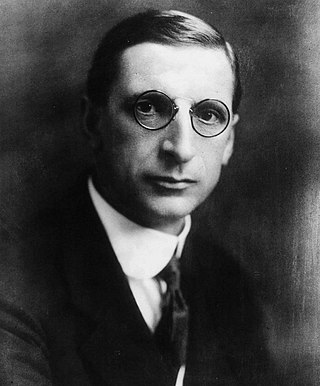
Elections were held in January and June 1920 for the various county and district councils of Ireland. The elections were organised by the Dublin Castle administration under the law of the then United Kingdom of Great Britain and Ireland (UK), and held while the Irish War of Independence was pitting UK forces against those of the Irish Republic proclaimed in 1919 by the First Dáil. Elections were held in two stages: borough and urban district councils in January; and county and rural district councils in June. Sinn Féin, which had established the First Dáil, won control of many of the councils, which subsequently broke contact with Dublin Castle's Local Government Board for Ireland and instead recognised the republican Department of Local Government. The election results provide historians with a barometer of public opinion in what would be the last elections administered on an all-island basis: the Government of Ireland Act 1920 passed at the end of the year effected the partition of Ireland from 1921, though the elections for the two home rule Parliaments envisaged by it were held on the same day; No further elections would be held simultaneously across the island of Ireland until 1979, when representatives of the Republic of Ireland and Northern Ireland to the European Parliament were elected. The next local elections were held in 1924 in Northern Ireland and in 1925 in the Irish Free State.
The town of Sligo was founded in 1243 AD by the Norman knight Maurice Fitzgerald and Fedlim O'Conchobar the Rí Coiced of Connacht. Norman influence appears to have lasted for about 60 years. From around 1310, after the Gaelic resurgence, the town existed well within the Gaelic cultural zone and developed on the Sligeach (Garavogue) river under the O’Conchobhar Sligigh dynasty and within the Irish túath of Cairbre Droma Cliabh as part of the Gaelic confederation of Iochtar Connacht until the creation of County Sligo by the English Lord Deputy Henry Sidney in 1561.

Atlantic Technological University is a technological university in the west and north-west of Ireland. It was formally established on 1 April 2022 as a merger of three existing institutes of technology (ITs) – Galway-Mayo IT, IT Sligo, and Letterkenny IT – into a single university, the fourth such TU in Ireland.
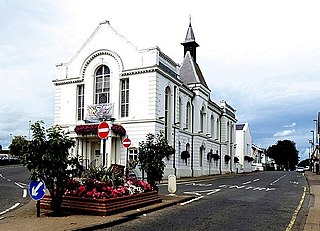
Ballymoney Town Hall is a municipal structure in the High Street, Ballymoney, County Antrim, Northern Ireland. The structure, which incorporates a local history museum, is a Grade B1 listed building.
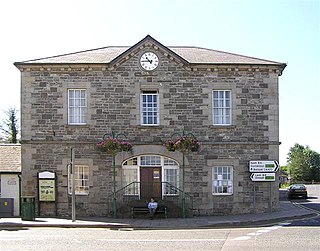
Ederney Town Hall, also styled as Ederney Townhall, is a municipal structure in Market Street, Ederney, County Fermanagh, Northern Ireland. The structure, which is used as a community events venue, is a Grade B1 listed building.

The Tholsel is a municipal building in West Street, Drogheda, County Louth, Ireland. Formerly the meeting place of Drogheda Borough Council, it is currently used as a tourist information office.

Dundalk Town Hall, is a municipal building in Crowe Street, Dundalk, County Louth, Ireland. It currently accommodates the An Táin Arts Centre.
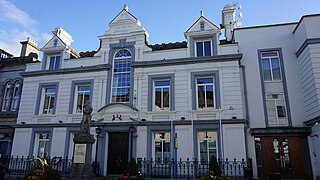
Clonmel Town Hall is a municipal building in Parnell Street, Clonmel, County Tipperary, Ireland. The building accommodated the offices of Clonmel Borough Council until 2014.
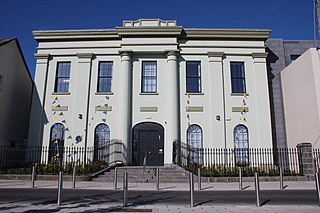
Carrick-on-Suir Town Hall is a municipal building in New Street, Carrick-on-Suir, County Tipperary, Ireland. The building accommodated the offices of Carrick-on-Suir Town Council until 2014 but is now used by Tipperary County Council for the provision of services to local residents.

Wicklow Town Hall, is a municipal building in the Market Square, Wicklow, County Wicklow, Ireland. The building currently accommodates the local offices of Wicklow County Council and the offices of Wicklow County Tourism.

New Ross Town Hall, formerly known as The Tholsel, is a municipal building in Quay Street, New Ross, County Wexford, Ireland. The building, which was used as the local market house through much of its life, is now used as a civic building.




















